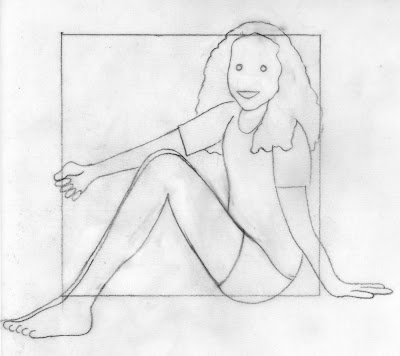The award-winning Israeli designer Dan Reisinger has created some of Israel's most well-known graphics, and is renowned for his innovative use of symbols and vibrant visual language. An exhibition at the Israel Museum,
In Full Color: 60 Years of Design by Dan Reisinger, opened in June and I was recently lucky enough to see it. The exhibition highlights the wide range of Reisinger's work in both style and size: from business cards and keyrings, to buildings and large-scale supergraphics. It includes the designs he created for private companies, as well as public organizations such as the Tel Aviv Municipality,
Israel Defence Forces (IDF), Habimah National Theatre and El Al Israel Airlines. It was a wonderful exhibition and I couldn't tear myself away from it!
Born in 1934 in Kanjiza, Serbia, Reisinger lost several family members in the Holocaust, including his father. He survived the Nazi occupation in a hideout and as a teenager became active in the partisan
Pioneer Brigade, immigrating with his mother and stepfather to the new State of Israel in 1949. Reisinger initially lived in a transit camp and then worked as a house painter in order to earn money from almost any source. He later attended Jerusalem's
Bezalel Academy of Art and Design as the youngest student accepted to the school at that time.
In 1954, Reisinger served in the Israeli Air Force, where he put his design skills to use art directing military publications. During this time in the Air Force he attended a class on postage-stamp design taught by the British graphic designer
Abram Games, who became his mentor and friend. Subsequently, Reisinger travelled, studied, and worked in Europe: from 1957 in Brussels and then onto London where, from 1964–66, he studied stage and three-dimensional design at the
Central School of Art and Design. He designed posters for Britain's Royal Mail, and worked for other clients while making intermittent visits to Israel. In 1966 he returned permanently to Israel and established his Dan Reisinger Studio in Tel Aviv. The same year he was commissioned to design the
Israeli Pavilion at the Expo '67 in Montreal.
Reisinger soon became one of the most prolific Israeli designer of his generation and won many prizes. He designed a new logo for
El Al (1972), and the 50-meter-long aluminium-cast relief of a biblical quotation in Hebrew on the exterior of
Yad Vashem, Israel's official memorial to Holocaust victims in Jerusalem (1978). He designed three
Israel Defence Forces (IDF) decorations: the
Medal of Valor, the
Medal of Courage and the
Medal of Distinguished Service. He also created the logos for the Tel Aviv Museum of Arts, Tefen Museum of Arts, and Habima National Theatre, and the symbol and posters of the 9th-15th
Maccabiah Games.
Reisinger's widely published self-produced poster, "Again?" (1993), above, features a Nazi swastika (which he incorrectly made to face left) breaking apart to form a five pointed red star of the Soviet Union, in reference to the possible dreaded repeat of the Holocaust. His "Let my people go" poster (1969) was actually a petition to the USSR authorities to let the Jewish people get out of the nation’s borders and immigrate to the Jewish nation. It was used in the demonstrations and served the demonstrators in their struggle.
He had his first solo exhibition at the Israel Museum Jerusalem and Tel Aviv Museum of Art in 1976-77, and has since exhibited his works in Israel and around the world in numerous group and one-person exhibitions. In 1998 Reisinger was awarded the Israel Prize - one of the state’s highest honours - the first designer to be the recipient of such an award, exactly 40 years after his first award, the 1958 Brussels Expo first medal for poster design. For his 70th birthday, the Hungarian Government honoured Reisinger with a comprehensive one man show at the
Museum of Applied Arts in Budapest.
There is no doubt that Reisinger's work has had a significant impact on the development of design in Israel, which continues to be felt to the present day. One of his more significant contributions has been to stretch the visual and communicative possibilities of Hebrew letters through his symbols and logos. His unique style is colourful and modern, playful in some posters and making provocative, impactful statements in others.
Reisinger still dedicates himself to painting and design today, and frequently takes part in international events as a jury member and lecturer. He is a member of the Alliance Graphique Internationale and the New York Art Directors Club, an honorary professor at the Moholy-Nagy University of Art and Design in Budapest, and an honorary member of the Russian Academy of Design, the committee of the International Biennale of Graphic Design Brno, and the Israel Designers Association.


























































